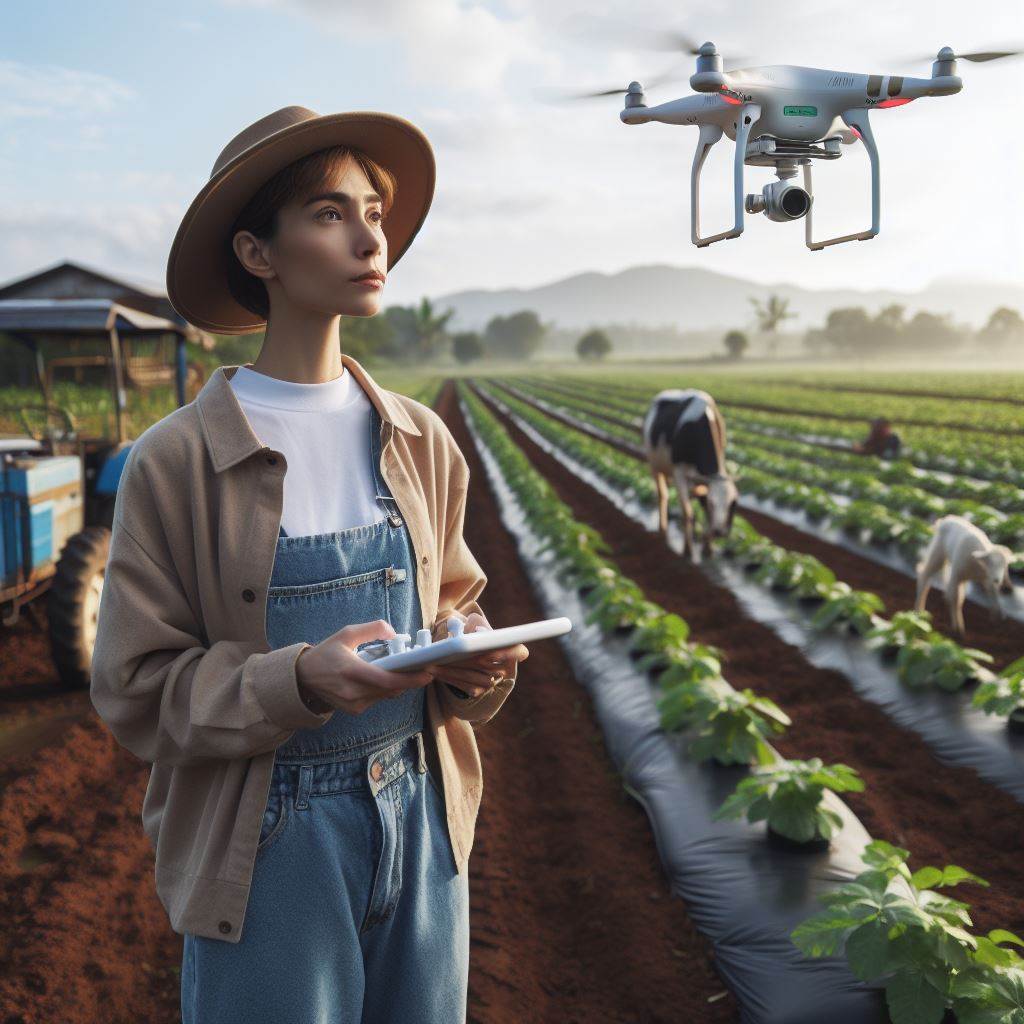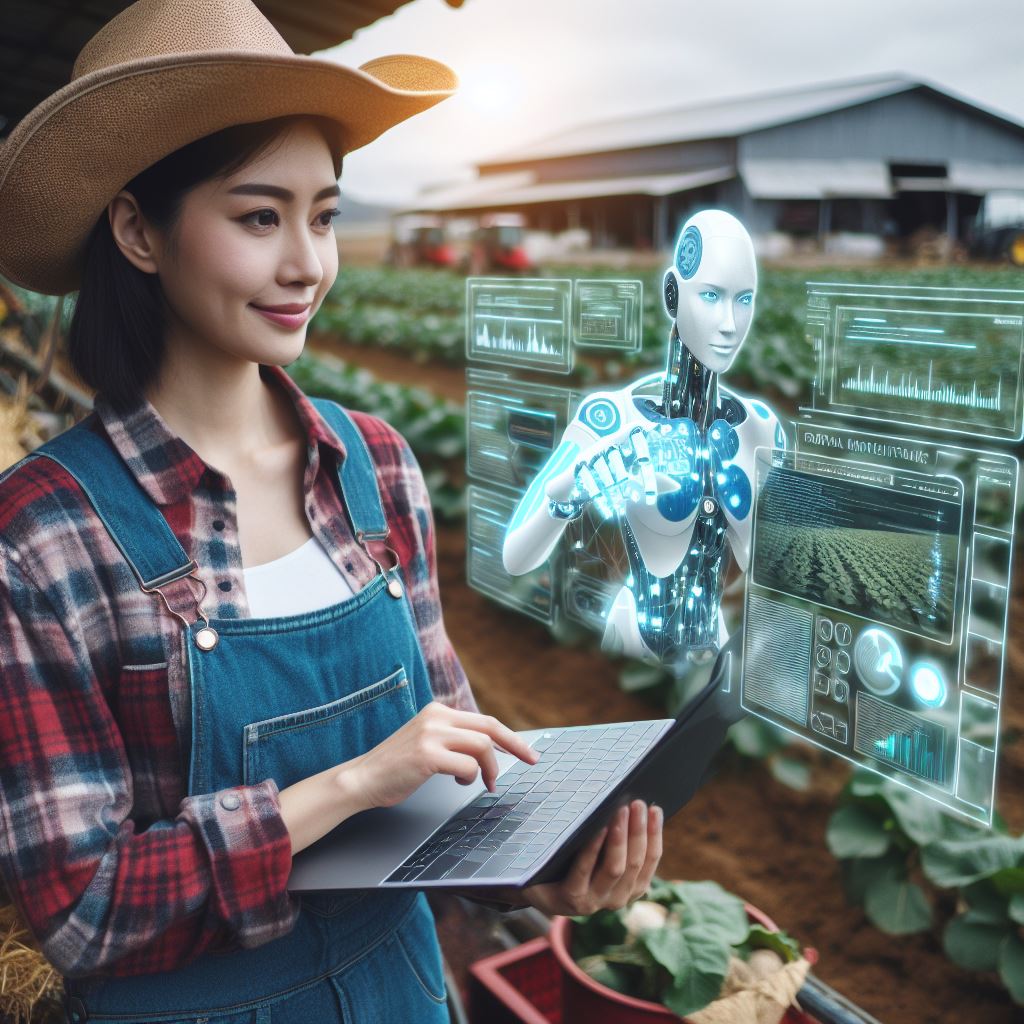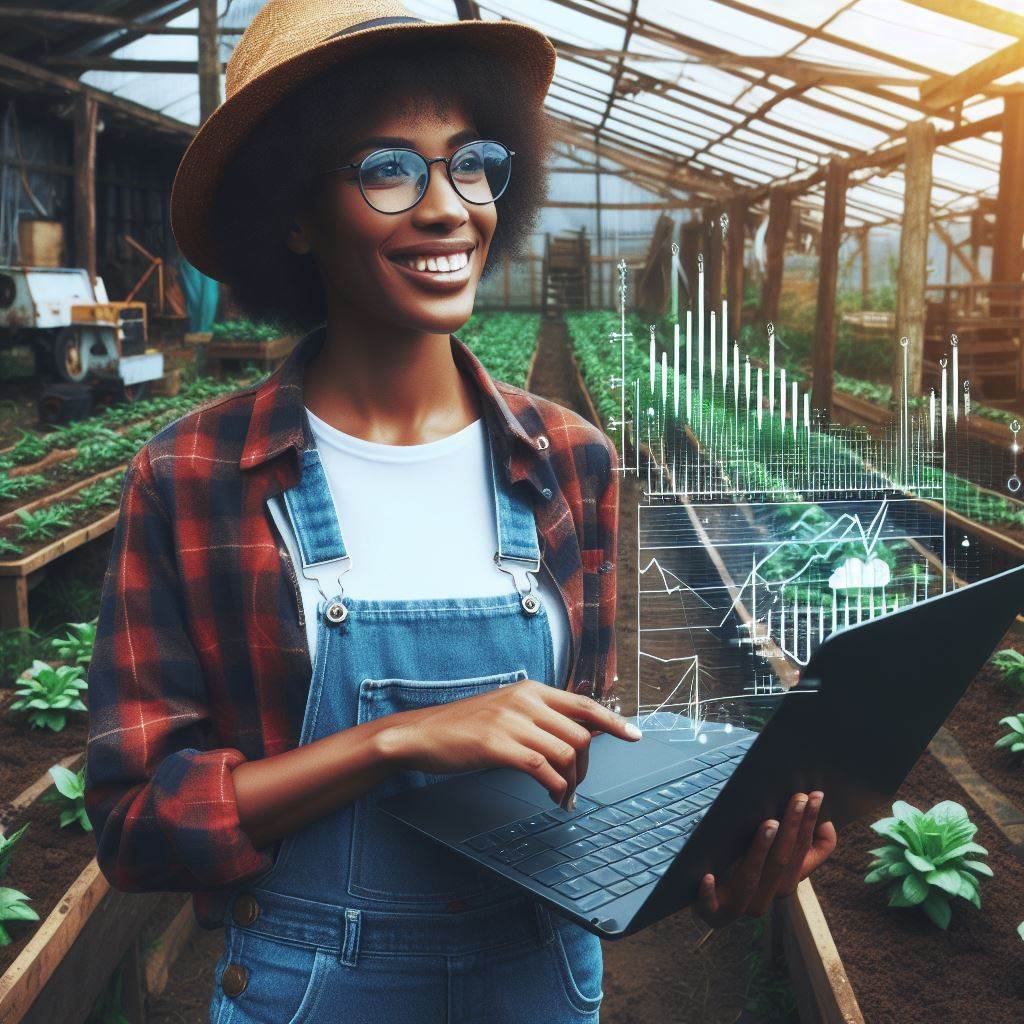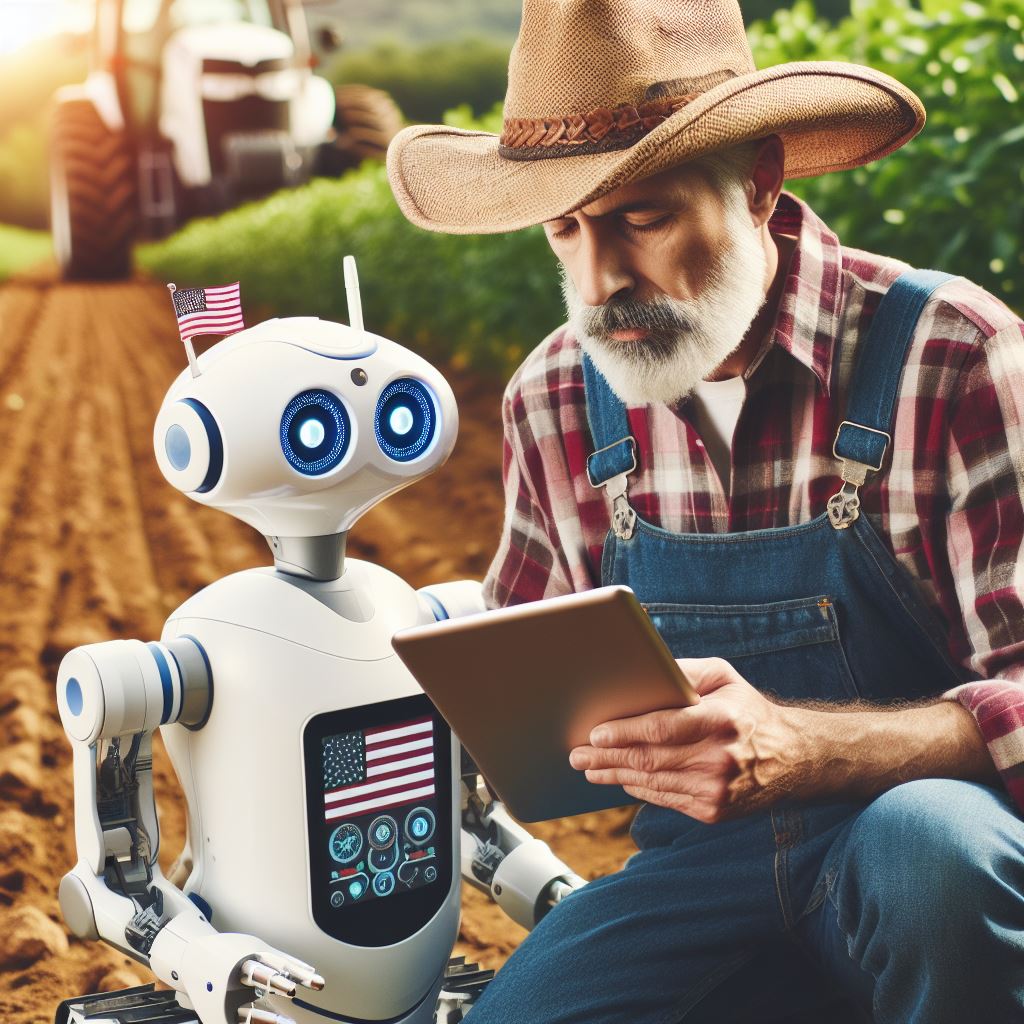Introduction
Importance of technology in agriculture
Technology has become increasingly important in the field of agriculture.
With the growing demand for food production, farmers are turning to innovative solutions to optimize their yields.
One such technology that is gaining popularity is the use of drones.
In this blog post, we will dive deep into the impact of drone technology in agriculture and explore its potential benefits and challenges.
Overview of the increasing use of drones in the industry
Drones are unmanned aerial vehicles that are equipped with various sensors and imaging technologies.
They can be programmed to collect data and perform tasks such as aerial surveillance, crop monitoring, and precision spraying.
The use of drones in agriculture has seen a significant rise in recent years due to advancements in technology and the need for more efficient farming practices.
Thesis statement on exploring the impact of drone technology in agriculture
The impact of drone technology in agriculture is multifaceted.
Firstly, drones provide farmers with a bird’s eye view of their fields, enabling them to identify issues such as nutrient deficiencies, pest infestations, and crop diseases.
This early detection allows farmers to take timely action, thereby improving crop health and reducing yield losses.
Additionally, drones can facilitate precision agriculture by delivering targeted treatments to specific areas of the field.
This eliminates the need for blanket spraying, reducing chemical inputs and minimizing environmental impact.
The ability of drones to cover large areas quickly and efficiently also saves farmers valuable time and resources.
However, the use of drone technology in agriculture comes with its own set of challenges.
Regulatory restrictions, privacy concerns, and the high cost of acquiring and maintaining drones are some of the hurdles faced by farmers.
Transform Your Agribusiness
Unlock your farm's potential with expert advice tailored to your needs. Get actionable steps that drive real results.
Get StartedNonetheless, the potential benefits of drone technology in agriculture make it a promising tool for the future of farming.
In the following sections, we will delve deeper into the specific applications of drones in agriculture and evaluate their effectiveness in improving crop productivity, resource management, and sustainability.
Through a comprehensive analysis, we will gain a better understanding of the true potential of drone technology in transforming the agricultural landscape.
The Role of Drones in Agriculture
Definition and Characteristics of Drones
Drones, also known as unmanned aerial vehicles (UAVs), are aircraft without human pilots onboard.
They are remotely operated and controlled.
Current Use of Drones in Farming
Drones are revolutionizing the agricultural industry in various ways:
- Collecting Data: Drones equipped with sensors and cameras are used to gather vital information, including crop health, soil quality, and irrigation needs.
- Monitoring Crops: Drones provide a bird’s eye view, allowing farmers to monitor large areas quickly and easily, identifying pests, diseases, and other issues in real-time.
- Planting Seeds and Spraying: Some drones are capable of seed planting and spraying crops with precision, reducing manual labor and ensuring even distribution of resources.
- Aerial Imaging: Drones capture high-resolution aerial images, helping farmers assess plant growth, analyze soil erosion, and detect drainage problems.
- Livestock Surveillance: Drones aid in monitoring and protecting livestock by surveying pastures, checking for injured or missing animals, and identifying potential threats.
Benefits of Using Drones in Agriculture
The integration of drones has brought significant advantages to the agricultural sector:
- Increased Efficiency: Drones help farmers optimize resource allocation by providing precise information, leading to better decision-making and reduced waste.
- Cost Savings: The use of drones for crop monitoring and treatment eliminates the need for labor-intensive manual inspections, reducing operational costs.
- Improved Crop Management: By analyzing real-time data collected by drones, farmers can promptly address issues such as nutrient deficiencies, pests, and diseases, leading to healthier crops.
- Time-saving: Drones cover large areas quickly and efficiently, reducing the time and effort required for manual inspection, planting, and spraying.
- Environmental Benefits: Drones promote sustainable agriculture practices by enabling targeted application of fertilizers, pesticides, and water, minimizing environmental impact.
- Enhanced Safety: With drones, farmers can assess potential risks and hazardous conditions without putting themselves in harm’s way. This improves worker safety and reduces accidents.
- Precise Decision-Making: The data collected by drones allows farmers to make informed decisions regarding irrigation schedules, crop rotations, and pest control strategies.
- Scale and Flexibility: Drones can adapt to different field sizes and terrains, allowing farmers to maximize their productivity on various types of land.
- Faster Response: When unexpected issues arise, drones offer a quick response, enabling farmers to address problems promptly and prevent potential crop loss.
- Future Technological Advancements: Drones are continuously evolving, with ongoing research to introduce advanced features like AI-based crop analysis and autonomous operations.
The utilization of drone technology in agriculture demonstrates its remarkable potential and ability to revolutionize the industry for the better.
By enhancing efficiency, reducing costs, and improving crop management, drones are becoming increasingly indispensable for modern farmers.
Read: Agri Drones: From Planting to Harvesting
Applications of Drones in Agriculture
In the field of agriculture, drones have become indispensable tools for various applications.
This section will explore the different ways in which drones are used to enhance agricultural practices in terms of crop monitoring and assessment, precision agriculture, livestock management, and mapping and surveying.
Crop monitoring and assessment
Crop monitoring and assessment play a vital role in ensuring the health and productivity of crops.
Drones offer a cost-effective and efficient solution for this task.
By using drones equipped with specialized sensors and cameras, farmers can capture high-resolution images of their crops.
These images provide valuable insights into the health and growth of plants, allowing farmers to detect early signs of diseases, nutrient deficiencies, or pests.
With this information, farmers can take timely actions to address any issues, preventing potential crop losses.
Precision agriculture and smart farming
Precision agriculture is another area where drones have made significant contributions.
Drones enable farmers to employ precision agriculture techniques, where resources such as pesticides, fertilizers, and water are applied precisely where and when needed.
For example, drones can be programmed to target specific areas of a field for pesticide application, ensuring that only the necessary amount is used, minimizing environmental impact.
Drones can also be used to optimize irrigation by identifying areas that require more or less water, resulting in efficient water usage and improved crop yield.
Livestock management and surveillance
Livestock management and surveillance can also benefit from drone technology.
Drones can be used to check on the well-being of livestock, especially in large and remote areas.
By flying drones equipped with thermal cameras, farmers can monitor the body temperature of their animals.
Showcase Your Farming Business
Publish your professional farming services profile on our blog for a one-time fee of $200 and reach a dedicated audience of farmers and agribusiness owners.
Publish Your ProfileThis helps in identifying any signs of illness or distress, allowing for prompt intervention.
Drones can also be used to locate and track livestock, making it easier to manage and prevent loss.
Mapping and surveying
Mapping and surveying are essential for effective land management in agriculture.
Drones provide an efficient and accurate method for creating detailed maps and 3D models of fields.
By capturing aerial images, drones can generate highly accurate maps that show the topography, soil composition, and potential areas for improvement.
Additionally, drones can survey large agricultural areas quickly and at a lower cost compared to traditional methods.
Farmers can use this information to make informed decisions about land use, crop rotation, and resource allocation.
Essentially, drones have revolutionized agriculture by offering innovative solutions to various challenges faced by farmers.
From crop monitoring to precision agriculture, livestock management, and mapping, drones have proven to be valuable tools for improving productivity, reducing costs, and ensuring sustainable practices in farming.
As technology continues to advance, the integration of drones in agriculture is expected to further enhance efficiency and productivity in the industry.
Read: Innovative Agri-Tech: Drones Changing Agriculture
See Related Content: LED Tech in Greenhouse Cultivation
Challenges and Limitations of Drone Technology in Agriculture
Drone technology has shown great potential in revolutionizing the agricultural industry, but it is not without its challenges and limitations.
Legal and Regulatory Issues
- Drones are subject to strict regulations and legal issues, which vary across different regions.
- Licensing requirements and restrictions on drone operations pose obstacles for farmers using this technology.
- Privacy concerns and airspace restrictions are also important considerations when using drones in agriculture.
Weather Conditions and Flying Limitations
- Adverse weather conditions, such as strong winds, rain, or fog, can hinder drone operations in agriculture.
- Poor weather conditions affect the stability, maneuverability, and visibility of drones, making them less reliable.
- Heavy rainfall or snowfall can render fields inaccessible by drones and limit their effectiveness in data collection.
Costs and Affordability Concerns
- The initial investment required for purchasing drones and necessary equipment is often significant.
- Additional costs include maintenance, repairs, software, and data analysis tools, which can strain farmers’ budgets.
- Small-scale farmers, in particular, may find it challenging to afford and justify the expenditure on drone technology.
Addressing and mitigating these limitations
Despite these challenges, advancements in drone technology continue to address and mitigate these limitations.
Regulatory bodies and policymakers are recognizing the importance of drones in agriculture and are adapting regulations accordingly.
Furthermore, research and development efforts are focused on enhancing drones’ capability to withstand adverse weather conditions.
Weather-resistant materials, improved flight control algorithms, and advanced obstacle detection systems are being integrated into drone designs.
Moreover, the decreasing costs of drones and associated technology are making them more affordable for farmers.
As economies of scale and competition increase in the drone market, prices are expected to decline further.
Additionally, various financing options and government support initiatives are being introduced to assist farmers in adopting this technology.
While challenges and limitations exist, the potential benefits of drone technology in agriculture outweigh them.
By effectively addressing these challenges, drones have the ability to revolutionize farming practices and increase efficiency.
Increased crop health monitoring, efficient pest control, and precise irrigation are just a few examples of how drones can benefit agriculture.
In general, it is essential for stakeholders to collaborate and address the challenges and limitations of drone technology in agriculture.
Through continuous innovation, regulatory adaptation, and increased accessibility, drones can play a transformative role in modern farming practices.
Read: Drones in Agri: Boosting Crop Efficiency
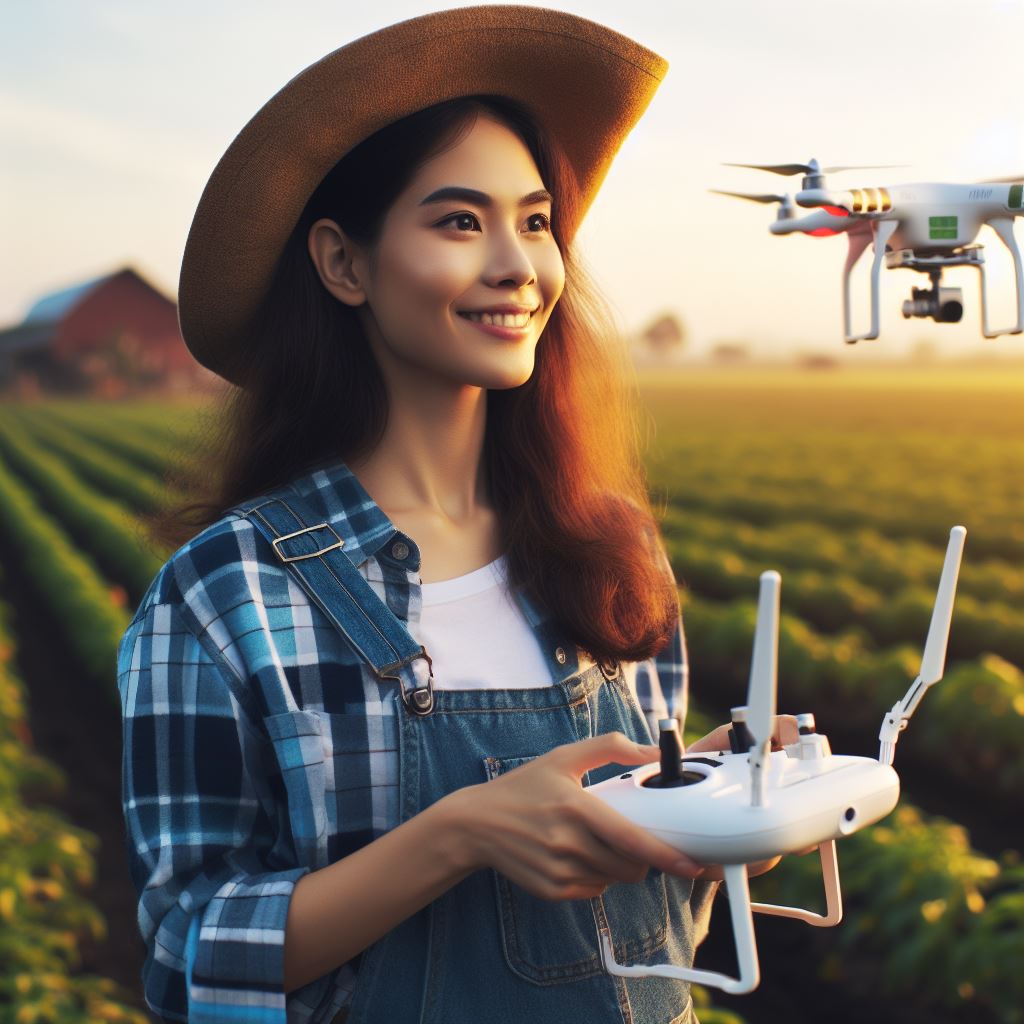
Future Potential and Developments
In recent years, there has been a surge in research and development efforts focused on advancing drone technology specifically for use in agriculture.
These developments hold great promise for the future of the industry.
Ongoing research and development in drone technology for agriculture
Various organizations and companies are investing heavily in refining and improving drone technology for agricultural applications.
Researchers are continuously exploring new ways to enhance the capabilities of drones in order to address the specific needs of farmers.
One area of focus in the ongoing research is the development of autonomous drones.
These drones would be able to operate without constant human intervention, allowing farmers to automate many tasks and save valuable time and resources.
By incorporating AI and machine learning algorithms, these autonomous drones can adapt to changing conditions and make intelligent decisions in real-time.
Another aspect being studied is the integration of artificial intelligence (AI) into drone technology.
AI can enable drones to analyze and interpret data collected from various sensors, such as multispectral cameras and LIDAR, to provide valuable insights to farmers.
This integration would empower farmers to make informed decisions regarding crop health, irrigation, and pest control.
Emerging trends shaping the future of drone technology in agriculture
As technology evolves, new trends are emerging that have the potential to transform the way drones are used in agriculture.
One such trend is the integration of advanced sensors and imaging technologies.
Researchers are working on developing drones capable of capturing high-resolution images, conducting hyperspectral imaging, and detecting specific plant diseases and nutrient deficiencies.
These advancements would significantly improve crop monitoring and enable farmers to take proactive measures for better yields.
Showcase Your Farming Business
Publish your professional farming services profile on our blog for a one-time fee of $200 and reach a dedicated audience of farmers and agribusiness owners.
Publish Your ProfileThe use of swarm drones is another emerging trend in agriculture.
Instead of relying on a single drone, farmers can utilize a fleet of synchronized drones that work collaboratively to cover larger areas and perform tasks efficiently.
This approach can save time and increase productivity in various agricultural processes, such as planting, spraying, and crop monitoring.
The revolutionary impact of drone technology in agriculture
Looking ahead, the potential impact of drone technology on agriculture is immense.
By leveraging the advancements in drone technology, farmers can benefit in several ways.
Firstly, drones can help farmers optimize their use of resources.
Through remote sensing and data analysis, farmers can identify areas of their fields that require more attention, such as irrigation or fertilization.
This targeted approach can minimize waste and reduce costs while maximizing crop yields.
Secondly, drones can revolutionize pest control in agriculture.
By using drones equipped with thermal cameras and sensors, farmers can detect pest infestations early and take immediate action.
This early detection can prevent crop damage and minimize the need for chemical pesticides, promoting sustainable farming practices.
Furthermore, the use of drones can make crop monitoring more efficient and accurate.
Drones equipped with sensors can capture detailed data on crop health, growth, and yield estimates.
This information allows farmers to make informed decisions regarding pest management, nutrient application, and harvesting timing, leading to improved overall crop quality and yield.
In essence, ongoing research and development efforts, along with emerging trends in drone technology, hold great promise for the future of agriculture.
With advancements in autonomous drones and the integration of AI, drones have the potential to revolutionize farming practices by optimizing resource usage, improving pest control, and enhancing crop monitoring.
The use of advanced sensors and swarm drones also opens up new possibilities for increased efficiency and productivity.
As these developments continue to progress, the future of agriculture looks bright with drones leading the way.
Read: Drones: Transforming Agricultural Practices
Explore Further: Precision Agri: A New Era of Farming
Conclusion
The benefits and potential of using drones in agriculture are immense.
Drones have revolutionized farming practices by enabling farmers to gather valuable data and monitor their crops efficiently and effectively.
The use of drone technology has shown promising results in improving efficiency and sustainability in farming.
By pinpointing areas that require attention, farmers can optimize resource allocation and reduce wastage.
Additionally, drones help mitigate the effects of climate change on crop production.
With real-time information, farmers can respond promptly to adverse weather conditions and prevent potential losses.
Furthermore, drones contribute to reducing the environmental impact of traditional farming methods.
By employing precision agriculture techniques, farmers can minimize the use of pesticides and fertilizers, leading to healthier crops and reduced pollution.
Considering all these advantages, it is clear that drones have the potential to revolutionize the agricultural sector.
Therefore, it is vital for farmers to explore and embrace the use of drones in their operations.
By investing in drone technology, farmers can improve their productivity, reduce costs, and contribute to a more sustainable and environmentally friendly farming industry.
In a nutshell, the future of agriculture lies in the skies with drones.
It is time for farmers to seize the opportunities presented by this innovative technology.

